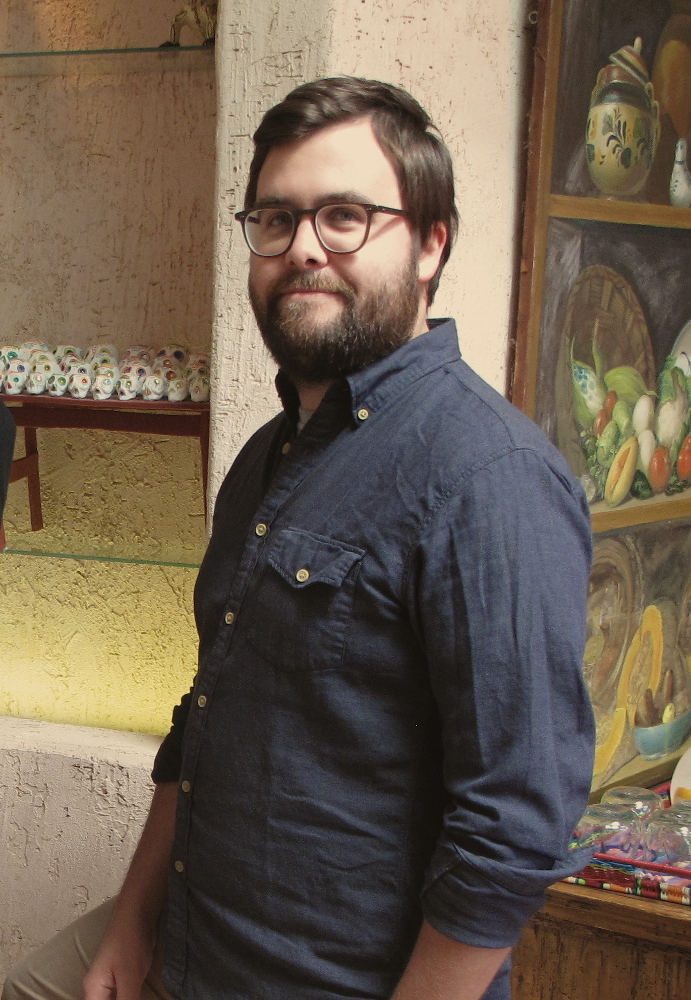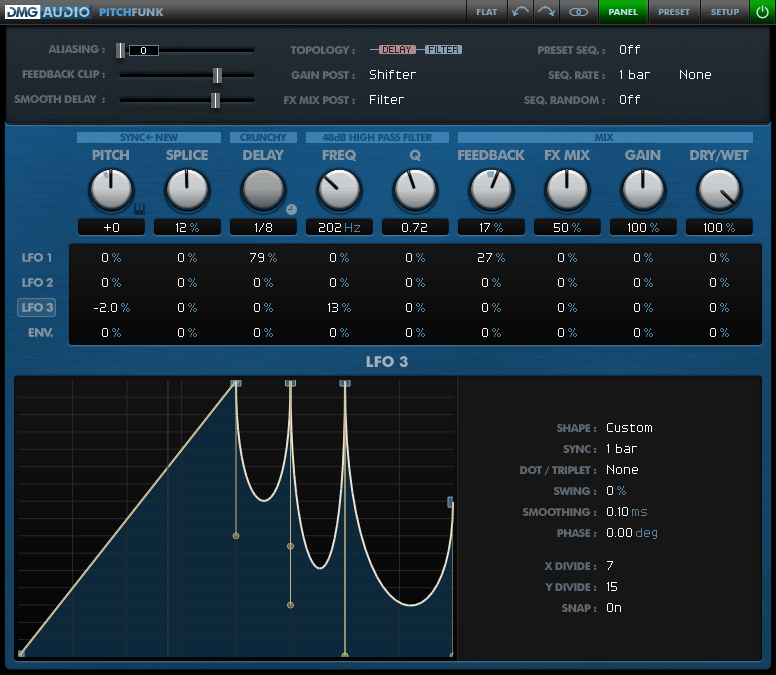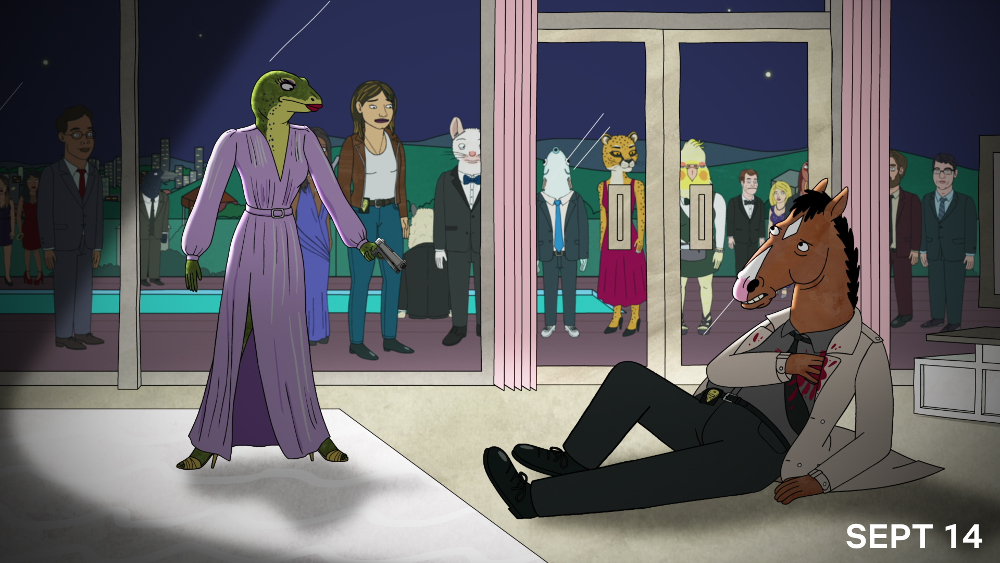Audio for Animation: Netflix’ “Bojack Horseman” Is Very Serious About Sound
You can’t have a talking horse without a supervising sound editor.
For that matter, all of the dysfunctional characters that populate the darkly crazed Netflix animated series “Bojack Horseman” would be nowhere without Hunter Curra. Listening in from his Pro Tools suite at LA’s famed Margarita Mix, Carra is a critical link in the signal path of Bojack’s all-star voice acting cast.
Now entering its fifth season (premiering on Netflix on September 14th), “Bojack Horseman” highlights how important amazing voices really are in sustaining a hit animated show. Built around the oddball premise of a horse who’s a former ‘90’s sitcom star making his self-centered way through excess-obsessed Hollywood, Bojack makes it or breaks it around the title character performance of actor Will Arnett, whose gravelly delivery makes pretty much every line a laugher. Add in co-stars Amy Sedaris (Princess Carolyn), Alison Brie (Diane Nguyen), Aaron Paul (Todd Chavez), and Paul F. Tompkins (Mr. Peanut Butter), and you’ve got an epic ensemble.
How did Curra get the honor of honing their voices for Netflix’ legions of binge watchers? A Texas-born graduate of Savannah College of Art & Design in 2005, as a Sound Design Major, Curra’s gamble that he would make it in LA paid off: He landed a coveted position at Margarita Mix Hollywood, where he got the chance to cut effects on the Emmy Award-winning Adult Swim series series “Robot Chicken.” Today, he heads up the facility’s Sound Effects Editorial Department, where his workload includes multiple animated series including the instant cult classic “Rick & Morty.” His client list is populated with many of the top content creators going, including HBO, Fox, Cartoon Network, Comedy Central, MTV, Disney, Dreamworks, Netflix, Amazon, and Hulu.
What does it take to oversee sound editing for a hit animated series? Listen in on our conversation with Curra — you’ll have a whole new appreciation for the skills of these unsung audio heroes.

How would you characterize the mindset of a sound editor? What makes you a different audio engineer than perhaps a mixer, or a tracking engineer?
Speaking specifically for animation like “BoJack Horseman,” a tracking engineer is mainly recording the vocal talent. At the very end, the re-recording mixer is taking everything that’s been assembled and works with our clients to formulate it into a cohesive piece that meets delivery spec.
My mindset is to work with the producers to complete their creative vision and filling out that world. Because with animation you start by recording the talent, and then that’s it: That’s the only thing in the soundscape. It’s different from live action, because in live action they go out and they shoot with microphones. If the actors pick up their keys, we can hear that they picked up their keys over the microphone — many times this recorded content is usable in the final piece.
In animation we start with studio-recorded talent, and then literally everything we add to create this world is constructed. So, it’s in my best intentions to complete the artistic vision of filling out that world, and to maintain consistency in supporting the narrative the best I can without trying to call attention to specifically to what we do.
A lot of people say in our trade, “If we’ve done our job right you won’t think about it.” You’ll just think about the story. Or you won’t think at all: You’ll just feel. And that’s really what we want.
Walk me through building an episode of “BoJack Horseman.” When it’s your turn to get going, you’re handed the recorded voice tracks, right? What happens from there?
Well, by the time I’ve started, they’re well into the animation process. They’ve had that recorded dialogue for a long time, they’ve animated to it, there’s color footage, and most of the time it’s what we call a “locked cut.” Which means they’ve made their creative edit decisions, and the timing of the cut won’t change.
Then I meet with the producers, and we talk creatively about what they want to hear and what we can do to enhance the comedy or the narrative. Then I meet with my team, we talk about what we’re going to do, and I split out the work to specific team members depending on the nature of the show. Often Foley is a split, backgrounds is a split, and then general effects which is anything that doesn’t fall within Foley and backgrounds. So, we’re working as a team, all simultaneously heading towards the same deadline. Separately and simultaneously, the composer is also working to get the music done. We have a temp score to work with until final mix.
As the supervising sound editor, how do you guide the group?
I’m the one that takes all the direction from the producers, directs my team, and maintains consistency for the idea of what we’re doing. My team finishes their work, I review it, and we put our final touches on it. Then we get some early feedback from the client, and address any notes that come up in that feedback.
From there we pass our work off to the re-recording mixer, and they do their own spin on it. Which is a really great thing, because they haven’t been a part of the process for the whole time, so they’re not buried in the details of everything that we’ve been trying to do. They have a nice fresh set of ears. They will spend a lot of time to make sure all the dialogue is really clear and to spec, and then work in the, sound effects, and music before doing a final review with the client.
That’s the whole pipeline right there. In general this process, for one half-hour episode of animation, can take anywhere between seven work days to three weeks. It depends on the content of the show, the difficulty of the job we have to do, and scheduling in general.
A Different Kind of Audio Career
How did you come to get this highly desirable gig? Tell us what led you into the sound editor niche.
I came from a place of just listening. I’m a musician. When I was very young I would tinker with tape recorders, and very early digital sound applications. At some point I found a CD of sound effects, and I would assemble things together on a computer at a very basic level like you could do in the early ‘90s. I also was interested in film. So I thought I was going to become a musician and go to music school, but that felt like it might take all the fun out of being a musician to me.
So I chose a different route, and I thought, “Well, maybe I’ll be a filmmaker.” But I always knew I loved sound, and in the process of being in school and trying to be a filmmaker, I suddenly gravitated more and more towards sound editing. And then just full on switched to that when I found my passion was there. I graduated with a BA in Sound Design from Savannah College of Art & Design, minoring in Film.
I enjoy critical listening. I pay attention. So pairing creativity with that natural sensibility led me on a path towards this job. I always really loved animation, and in the early 2000’s or late ‘90s when you started to see all of the Adult Swim content coming out, I was like, “They’re finally making mainstream animation for people that aren’t under the age of 10.” That was so great. I said, “Man. If I could just somehow work on some of that stuff.”
Through the magic of just being at the right place at the right time, I started working at Margarita Mix Hollywood, and some Adult Swim animated projects came my way. We have since developed a reputation. It’s been really exciting, and in some ways, it’s a dream to work on some of the projects we do.
Tricky Plugin Tips
Tell me about the studio setup you’ve got there at Margarita Mix. What are some of your primary tools?
I have a Pro Tools HD based surround sound monitoring setup, and a keyboard MIDI controller for hardware, the rest of my gear is in the box.
Do you personally deal with sound libraries?
I have many, many sound libraries. Some purchased from outside, as well as lots of effects we have recorded or designed over the years that have now become a part of our arsenal. A television SFX editor has to work fast, and being a good librarian is part of that. Not only as you’re working, but also being ahead of that and knowing your library, knowing what’s worked in the past, knowing where to go to find what you need, or knowing that you don’t have it and you need to go and start recording, or synthesizing or whatever might be the case. Once we design something that’s really useful, we’ll archive that, and it will help us in the future someday.
We work with Soundminer which is a sound database tool for searching, editing, and effecting what’s already in your library. It’s a librarian application, and it does a really good job. It’s been tweaked for our use in particular.
What kind of plugins do you use in your everyday workflow?
EQ, compression, some basic effects like reverb, echo, delay, chorus — all those basics are covered. And then you get to more upper level or situation-specific plugins that really end up saving us time and help us with the design work, which are a category onto themselves.
What are some of those time-saving plugins?
It’s very common for sound editors, as well as music editors to have Serato Pitch ‘n Time, which is great at exactly what it says: pitching and time shifting, and it can do it in a graphically. That’s really helpful when you’re trying to make something pitch up and down really quickly over time, or also make something get expanded or compressed in time — and you can do all that at the same time. Plus, the algorithms within that plugin just sound really good, and natural, and don’t add a lot of artifacts.
Another one is Soundtoys, just their whole collection. Their delay plug-in [Echoboy] also has envelope control and pattern choice, so it can do really musical effects. They’re maybe more helpful with music production than sound design, but they also do a lot of really great stuff for us too.
When I really need to do some weird stuff, a company called DMG has Pitchfunk, which is a really intriguing plugin. On a basic level it’s a pitch shifter with delay and EQ, but it has really advanced envelope controls, and you can get everything to interact with each other. Almost like the old synthesizer days where you could patch a control voltage from one thing to another, and you would maybe get an LFO controlling an EQ filter etc. Everything can be interconnected to do really crazy things.
One example that’s BoJack-specific that we used it was when we did a whole episode where everybody was underwater [Season Three, Episode Four, “Fish out of Water”]. There wasn’t a lot of dialog in the episode, but some of the character efforts were recorded just normally in the studio, and we wanted to make them sound underwater. So I went underwater and I blew bubbles, and tried to talk. Then I realized that, “Well, how you sound underwater is not just that you sound a little muted, but your tones come out in short bursts like bubbles.”
I used an LFO in Pitchfunk to control an EQ filter at a certain rate, which just made it open and close, open and close. Then I used another LFO to control the speed at which that LFO was working, so it wouldn’t feel like the same rate of bubble talk. It would vary over time, so the viewer wouldn’t say, “Oh, it just sounds like they’re behind a propeller or something.” It sounds very static, but you hear that choppiness. I used one [LFO] to control how fast that “fan” would be going, and it would change randomly so that it would feel more natural and random like nature is.
Tracking the Changing Landscape
How do you see the media production landscape changing for your friends in the industry? Especially in the LA area, how has the arrival of “new” players like Netflix changed the nature of post production work?
The streaming video on demand, SVOD, services like Amazon, Netflix and Hulu have definitely changed the landscape. We’re still making things that feel more like a television show, and things that feel more like movies, but we really don’t have any time constraints anymore like you do in a network television show. A network television show has to be 22 minutes or 44 minutes in run time to leave room for commercials, for a 30-minute or hour-long show, respectively.
But the times have changed. Netflix, Amazon, and those companies were sort of mimicking TV a little bit more [earlier on], but I think more and more we’re seeing them break that model and start to feel more like, “This is its own format.” They’re saying, “We don’t need to make it 22 minutes. If a story feels better being 25 or 32 minutes, it’s okay.”
I think it’s very freeing for producers to be able to just tell the story they want to tell, not worry so much, and think about the format that it’s not necessarily TV anymore, it’s this other thing. I think the line is getting blurred. “Is this a TV show? Is this a mini-series? Is this a movie? Is this a short film?” It’s more of a feel than anything.
You want a TV comedy to be peppy and quick with the jokes, and a short film you expect it to be a little bit more long-winded, and breathy. But a show like “BoJack” incorporates elements of all of that: It has peppy comedy, it also has dark, dark moments of drama. Format be damned, let’s just call it a good show!
- David Weiss
Please note: When you buy products through links on this page, we may earn an affiliate commission.









